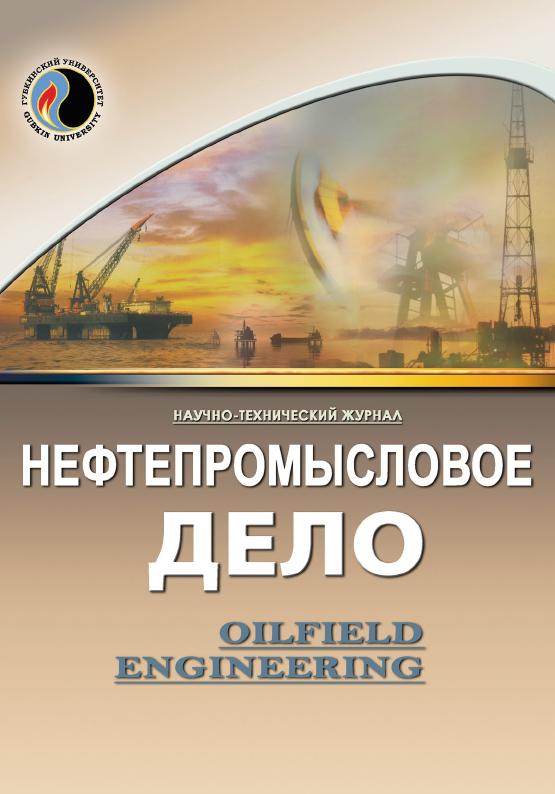20 years later: analysis of trends of the oil-water displacement factor change in low-permeable reservoirs of the Priobskoye field (from 1993–1997 up to 2013–2016)
UDC: 622.276.57
DOI: 10.33285/0207-2351-2023-3(651)-17-24
Authors:
YANIN ANATOLY N.1,
BIKKULOV MARSEL M.2
1 PB "TERM", Tyumen, Russia
2 Gazpromneft-Khantos, Khanty-Mansiysk, Russia
Keywords: Priobskoye field, AC10–12 formations, displacement coefficient, residual oil saturation coefficient, low- and ultra-low-permeability reservoirs, core tests on oil displacement by water
Annotation:
One of the reasons for the insufficiently complete and reliable substantiation of Kvyt.
value in the project documentation is the lack of clear quantitative criteria established by the state (in the form of RD) that determine the "optimal" boundaries of the specified parameter study (the required number of core samples studied, the number of oil displacement experiments).
The coefficient of oil displacement by water, determined at the initial stage of a reservoir development, in the presence of a small amount of research, can differ significantly from its value, established at the later stages of development, especially in conditions of oil content in deposits with low- and ultra-low-permeability reservoirs.
For the Priobskoye field, after a significant increase in the number of studies performed (an increase in the number of samples from 55 to 486), for low permeable reservoirs (~1...10 mD), there occurred a strong decrease of the coefficient of oil displacement by water at the following permeability:
– 0,85 mD – from 0,398 to 0,219, or 1,82 times;
– 3,5 mD – from 0,482 to 0,350, or 1,38 times;
– 6,6 mD – from 0,514 to 0,396, or 1,3 times;
– 9,5 mD – from 0,542 to 0,433, or 1,25 times.
On the average, for the entire core sampling, Kvyt. decreased from 0,488 to 0,358, or 1,36 times.
Residual oil saturation coefficient in the studies performed in 2013–2016, as compared with the studies of 1993–1997, on the contrary, it increased significantly: for Kpr.
= 0,85 mD – from 0,221 to 0,286; Kpr. = 6,6 mD – from 0,257 to 0,311; Kpr. = 9,5 mD – from 0,262 to 0,317, on the average for the entire core sampling, Kon increased from 0,248 to 0,306, or by 23 %.
Thus, a retrospective study of the 20-year history of changes of oil displacement parameters in the Priobskoye field revealed a significant change in the idea of a reliable value of Kvyt., showing its significant decrease, especially in the area with ultra-low (Kpr. < 1,5 mD) permeability of core samples.
Bibliography:
1. Yanin A.N. O normativakh optimal’noy geologicheskoy izuchennosti parametrov neftyanykh zalezhey // Burenie i neft’. – 2018. – № 5. – S. 30–35.
2. Balin V.P., Mokhova N.A. Opredelenie koeffitsienta vytesneniya nefti vodoy s ispol’zovaniem metoda stabilizatsii raschetnykh parametrov (na primere plastov gruppy AV1-2 Nizhnevartovskogo rayona) // Neftepromyslovoe delo. – 2014. – № 10. – S. 5–11.
3. Organizatsiya dlitel’nogo khraneniya i dopolnitel’nye issledovaniya kerna po skvazhinam OAO "Yuganskneftegaz": otchet AOOT "SibNIINP" / V.T. Pitkevich [i dr.]. – Tyumen’, 1997. – 392 s.
4. Kompleksnoe laboratornoe issledovanie kerna mestorozhdeniy Zapadnoy Sibiri v 1993–1997 gg.: otchety OAO "SibNIINP" / V.T. Pitkevich, E.A. Romanov, V.Yu. Kolmogorov [i dr.]. – Tyumen’, 1997.
5. Otchety OOO "Neftekom" za 2013–2016 gg. po issledovaniyu kerna, otobrannogo iz 36 skvazhin Priobskogo mestorozhdeniya (yuzhnaya chast’). Nedropol’zovatel’ OOO "Gazpromneft’–Khantos".
6. Yanin A.N., Kreynin A.G. O koeffitsiente vytesneniya nefti vodoy iz "ul’tranizkopronitsaemykh" (menee 1 mD) terrigennykh kollektorov Zapadnoy Sibiri (na primere Priobskogo mestorozhdeniya) // Nedropol’zovanie XXI vek. – 2020. – № 3(86). – S. 60–69.
7. Yanin A.N., Bikkulov M.M. "Obobshchennye" zavisimosti dlya opredeleniya koeffitsientov vytesneniya v nizkopronitsaemykh (do 10 mD) plastakh Priobskogo mestorozhdeniya // Neftepromyslovoe delo. – 2022. – № 6(642). – S. 20–30. – DOI: 10.33285/0207-2351-2022-6(642)-20-30

